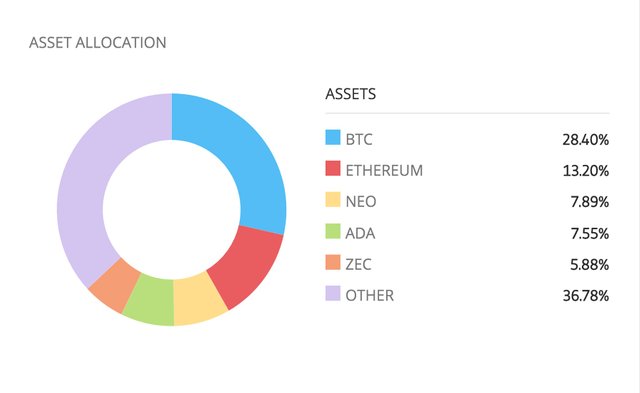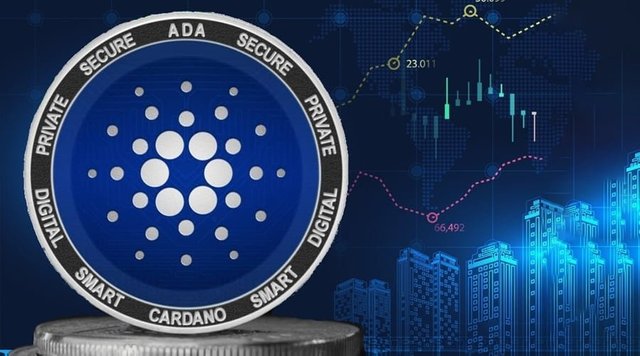How To Set Up Your Crypto Investment Portfolio As A Beginner.
Hello steemians, if you're looking to invest into crypto for the first time, and you have an amount to invest but don't know how you should set up a portfolio. I'm going to take you through what I think is a good split for the first-time $1,000 investment in cryptocurrency. I'll look at specific cryptos to invest in, then go through the breakdowns and why each crypto takes up a certain percentage of the overall investment. I can't give you financial advice because this is just what I would look to do and hopefully this can help you as a reference. I'm assuming you want to invest the $1,000 for the long term and not day trading to earn some profits daily. I am focusing on setting up a crypto investment portfolio for your first $1,000 in the space.

image source
You're not going to become rich overnight and I think your first $1,000 should be nothing too fancy because I don't think a bunch of microcap coins is going to be the way to go with this. If you're new, then I'd say just having a few bigger cryptos is still going to give you a nice upside. The crypto market is still new, relatively quite small, and still very volatile that you don't need to be searching for 100x alt coins, because the plain truth is that 95% of those will fail and it's not a good way to start in life.
The first crypto will of course be Bitcoin. Bitcoin will be the first cryptos most people invest in and I don’t think you have yet missed the boat on Bitcoin. There's no way you're going to get those 1,000% returns that early investors got but Bitcoin is a different investment now with a different risk profile. Institutions with investment funds and large wealth funds are buying Bitcoin right now as a store of value and an inflation hedge. Bitcoin will continue to rise in my opinion and also the safest bet in crypto for me hence it should make up a nice proportion of your portfolio. The way you should think of your $1,000 is like a pie chart with 100%, and then you can choose how much you want to allocate to each crypto. This isn't financial advice but you can easily change things around to suit your risk profile but Bitcoin for me will offer a good risk-adjusted return. With Bitcoin, I want to just buy some and forget about it and I hold some of my Bitcoin in Celsius wallet which is a crypto wallet that pays you for holding crypto on your account. Celsius is a big blockchain project and with this kind of service, you can hold your Bitcoin in your account and Celsius will pool it with other people, to lend it out to various traders that may need to borrow the asset to settle trades.

image source
The next coin is ethereum. Ethereum has a very high correlation with Bitcoin, meaning Bitcoin moves one way and so does Ethereum which could mean that you’re overexposed to Bitcoin price movements. However, the evidence does show that ethereum over time is uncoupling from Bitcoin and becoming less correlated and it should become ever more detached because ethereum and Bitcoin are not the same. Bitcoin is now a store of value and a hedge for inflation, while ethereum is a blockchain that allows for smart contracts, and in the future will allow for staking which means you can earn coins that increase income from your holdings. Currently, ethereum has a lot of issues with transaction fees being too high known as gas fees that have made using the network prohibitively expensive but it is the largest and most used smart contracts blockchain up to now. Ethereum is a first-generation project and as such has many problems that second and third-generation blockchains simply don't. There's a lot of money and time invested in the blockchain already, and the new layer two protocols are coming on stream to try and fix some of the current issues. As an investor, I understand that I need to be diversified and also have exposure to projects like this, but I will often come back to my investments and make decisions about selling or buying more.

image source
The third crypto will be ADA which is the cryptocurrency of the Cardano blockchain. ADA is a project that I like a lot and I did want to give it a higher percentage in the portfolio, but I think for your first $1,000, going overweight in Bitcoin and Ethereum is probably a safer bet overall because those two will get the most institutional investment over the next 12 to 18 months. I believe ADA has the potential to perform very well over time, because of the way it solves most of the problems that ethereum currently has. Cardano is in a much earlier stage of development than Ethereum, and therefore we must place a higher level of risk on the investment. Cardano will have lower network fees, and more decentralization than ethereum, while allowing for interoperability between blockchains and it’s often referred to as the internet of blockchains.

image source
The next project to invest in will be Polkadot. There are so many projects that I like and think provide genuine utility and usefulness, that could grow into big ecosystems but with $1,000, you simply can't invest in all of them. Polkadot is another project founded by an ethereum co-founder, unlike Cadorna which wants to be almost the internet of blockchains enabling cryptocurrencies of value transfers seamlessly across the network. Polkadot wants to be the blockchain of blockchains which is the basis for a modern internet. It wants to enable anyone to simply create their blockchain with their own set of rules that uses the Polkadot relay chain as the basis for settling the transactions.

image source
Another project that I think has huge potential is Solana. Solana is built for one thing, and that's the speed of transactions, whereas Bitcoin and Ethereum process transactions are quite slow. Solana can process multitudes of both of those blockchains put together. It would be a good platform for payments, as it can handle more than 50,000 payments per second at a tiny transaction cost and to put that into context, the entire visa payment system handles around 3000 per second. Solana already hosts stable coins like USDC and USDT, and it could be the basis of blockchain payments in the future, there will be competition, though, in the future from other players like Visa.

image source
Vechain is a blockchain platform that is designed to enhance physical supply chains in the real world. Retailers and consumers could determine the quality and authenticity of a product and while using Vechain, you could see when, where the project was manufactured and how it got to your door. This can have a wide range of impacts on the quality and security of food and household items.

image source
Generally, it is important to invest around 15% of the portfolio into smaller cryptos that you might make the look of. This is going to be down to personal preference and what type of projects that you'd like which will be different for everyone because the Crypto space is so large with so many good projects. The main takeaway for me, however, is that you'll put around 50% of your holdings in your top two picks.
Keep steeming,
@brayan256
You have been curated by @yohan2on, a country representative (Uganda). We are curating using the steemcurator04 curator account to support steemians in Africa.
Keep creating good content on Steemit.
Always follow @ steemitblog for updates on steemit